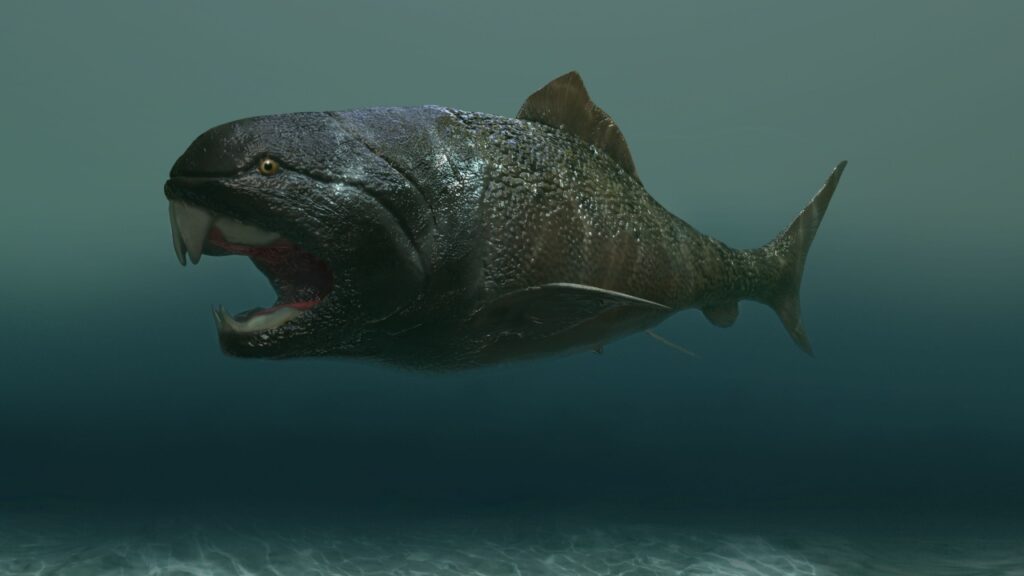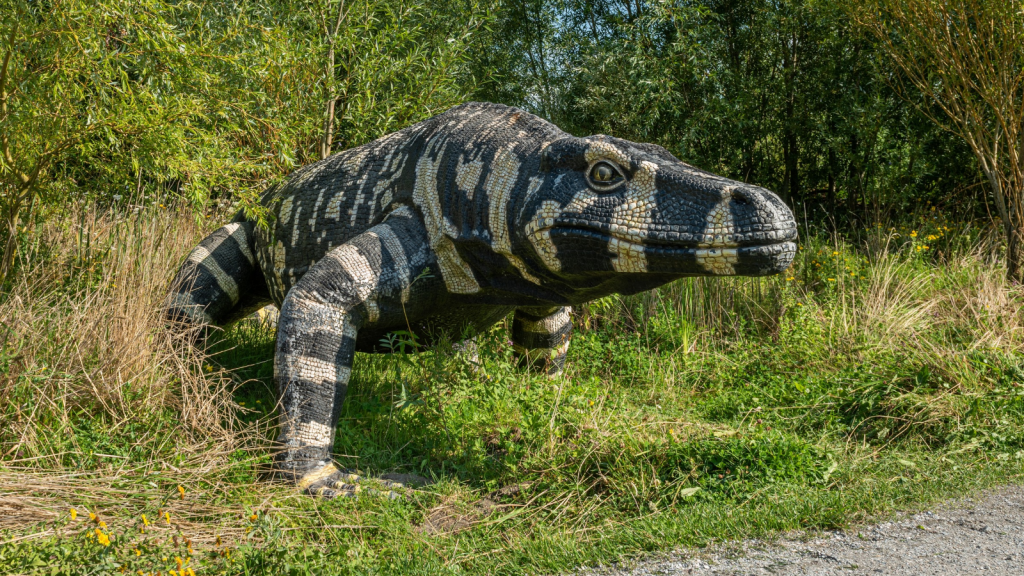Imagine walking through a primeval forest or swimming in ancient seas, only to come face-to-face with a monstrous creature from Earth’s distant past. Our planet once teemed with fearsome beasts that would make today’s wildlife look positively cuddly. From razor-toothed fish larger than buses to birds that could swallow a human whole, these prehistoric predators ruled their domains with iron claws and bone-crushing jaws. Join us on a journey through time as we explore 12 of the most terrifying hunters that ever lived. These long-extinct animals might just make you grateful for the relative safety of our modern world!
Megalodon

The megalodon was a giant shark that dwarfed even the largest great whites of today. Growing up to 18 metres long, this ocean titan had jaws powerful enough to crush a small whale. Its massive teeth, some as big as a human hand, have been found all over the world, hinting at its once-widespread reign of terror in ancient seas. Scientists estimate that megalodon needed to eat about 2,500 pounds of food every day to sustain its massive size.
Titanoboa

Slithering through the swamps of prehistoric South America was Titanoboa, a snake so massive it makes today’s anacondas look like garden worms. This 13-metre-long, one-tonne serpent could crush and swallow crocodiles whole. Its discovery has changed our understanding of how large cold-blooded animals could grow in Earth’s past. Titanoboa thrived in a world much hotter than today, suggesting it may have been warm-blooded or had unique adaptations to regulate its body temperature.
Spinosaurus

Spinosaurus was a semi-aquatic dinosaur larger than T. rex, with a crocodile-like snout full of conical teeth perfect for catching fish. Its most striking feature was a huge sail on its back, which might have been used for temperature regulation or display. This bizarre creature is thought to have been an excellent swimmer, hunting prey both in water and on land. Recent fossil discoveries suggest Spinosaurus had a paddle-like tail, further confirming its aquatic lifestyle.
Arthropleura

Imagine a millipede the size of a car, and you’ve got Arthropleura. This giant arthropod roamed the swampy forests of the Carboniferous period, growing up to 2.6 metres long. While it was likely herbivorous, the sight of this armoured giant scuttling through the undergrowth would surely send shivers down any modern human’s spine. Arthropleura’s extinction may have been linked to the drying of its swampy habitats and the evolution of early reptiles.
Pterosaur Quetzalcoatlus

With a wingspan of up to 10 metres, Quetzalcoatlus was one of the largest flying creatures ever to exist. This pterosaur could walk on all fours and likely swooped down to snatch up smaller dinosaurs in its toothless beak. Its ability to launch itself into the air despite its massive size continues to baffle scientists. Some researchers believe Quetzalcoatlus may have been capable of crossing entire continents in a single flight.
Dunkleosteus

Dunkleosteus was an armoured fish that ruled the seas 360 million years ago. Instead of teeth, it had sharp bony plates that formed a beak-like structure, capable of exerting an estimated 8,000 pounds of force per square inch. This 6-metre-long predator could slice through even the toughest prey with ease. Dunkleosteus could also open its jaw extremely quickly, creating a powerful suction force to draw prey into its mouth.
Smilodon

Better known as the sabre-toothed cat, Smilodon sported impressive canine teeth up to 18 centimetres long. These deadly daggers were used to deliver killing blows to prey after ambushing them from hiding spots. Despite its fearsome appearance, Smilodon was about the size of a modern lion and likely hunted in groups. Contrary to popular belief, Smilodon’s famous sabre teeth were actually quite fragile and probably used only for precise, fatal bites to soft areas like the throat.
Andrewsarchus

Often called the largest mammalian land predator ever, Andrewsarchus was a wolf-like creature the size of a rhino. Its metre-long skull housed powerful jaws that could crunch through bone and shell with ease. While its exact diet is debated, this massive mammal was undoubtedly a force to be reckoned with in its Eocene world. Andrewsarchus is known only from a single skull, making it one of the most mysterious prehistoric predators on this list.
Megalania

Megalania was a giant monitor lizard that stalked the plains of Australia until relatively recently. Growing up to 7 metres long, it was essentially a Komodo dragon on steroids. Like its modern relatives, Megalania likely had a venomous bite, making it an even more formidable predator of prehistoric marsupials. Some evidence suggests that early humans may have encountered Megalania, potentially influencing Aboriginal folklore about giant lizards.
Livyatan Melvillei

Named after the biblical sea monster, Livyatan was a massive sperm whale that hunted other whales. Its 3-metre-long skull contained teeth bigger than those of T. rex, allowing it to tackle large prey. This ocean giant lived alongside megalodon, suggesting fierce competition in ancient seas. Livyatan’s brain was also incredibly large, hinting at complex social behaviors similar to modern sperm whales.
Terror Bird

Phorusrhacids, commonly known as terror birds, were flightless avian predators that grew up to 3 metres tall. With powerful beaks and claws, these birds were the top predators in South America for millions of years after the dinosaurs went extinct. Their ability to run at high speeds made them formidable hunters of early mammals. Some species of terror birds may have been able to deliver bone-crushing kicks, similar to modern cassowaries.
Anomalocaris

One of the earliest large predators on Earth, Anomalocaris ruled the seas over 500 million years ago. This metre-long arthropod had large eyes, a circular mouth full of sharp plates, and two large appendages for grabbing prey. Its bizarre appearance, like something out of a science fiction film, reminds us how alien early life on Earth could seem. Anomalocaris played a crucial role in the evolutionary arms race of the Cambrian period, spurring the development of hard shells in many other species.
Becky is a fervent wildlife enthusiast and pet care expert with a diploma in canine nutrition. Her love for animals stretches beyond the domestic, embracing the wild tapestry of global fauna. With over a decade of experience in animal welfare, Becky lends her expertise to OutlandishOwl through insightful articles, captivating wildlife information, and invaluable guidance on pet nutrition. Her work embodies a deep commitment to understanding the intricate lives of animals and a passion for educating others on sustaining natural habitats. Becky's hands-on conservation efforts and her knack for translating complex dietary science into practical pet feeding tips make her an indispensable voice for creatures great and small.




